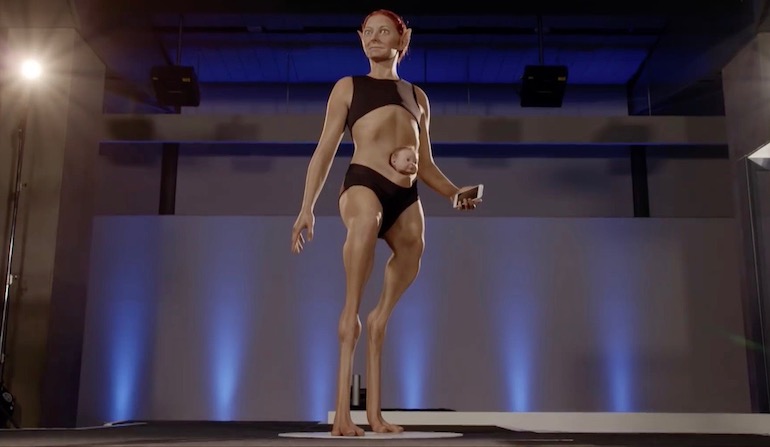 Evolution
Evolution
 Intelligent Design
Intelligent Design
The Perfect Human Body?


We all know that the human body can suffer from flaws. For most people, that doesn’t mean our bodies are accidental by-products of unguided evolution. Instead, they are designed — despite the fact that they sometimes start out flawed or become flawed as they grow older.
For English anatomist Alice Roberts, however, the human body is a “hodge-podge” of parts assembled in an “untidy” fashion “with no foresight” by evolution. So, like many evolutionary biologists before her, she set out with some colleagues to “design and build the Perfect Body.” Her results were aired on BBC Four on June 13, 2018.
According to Roberts, the Perfect Human Body would have ears like cats and lungs like birds. (Of course, bird lungs would require major modifications to other aspects of human anatomy, but the details might get “untidy.”)
The Perfect Human Body would also have legs like ostriches. Ostrich legs are “digitigrade” — they rest on their toes. They are also very fast, enabling ostriches to run very quickly on the plains of Africa. And ostrich legs have proven to be a good model for making prosthetics to help people whose legs have been amputated above the knee.
Human legs are “plantigrade” — they rest on their soles. They are not as good at running as digitigrade legs, but their stance is more stable and they are a lot more versatile. Would I trade mine for the equivalent of prosthetics worn by an amputee? Not unless I have to.
Another change Roberts would make is to the reproductive system. Because of the large size of a human baby’s head, giving birth can be dangerous and very painful for women — though modern medicine has made it much safer and less painful. For Roberts, it would have been better if humans had evolved to be marsupials, like kangaroos, whose tiny fetuses crawl out into a pouch to complete their development.
But marsupials are much less intelligent than placental mammals (which include not only humans, but also sloths), because a marsupial brain “differs markedly in both structure and bulk” from a placental brain. So Roberts’s Perfect Human would be much less intelligent than an actual human being.
But my favorite among her “improvements” is the eye. According to Roberts, “our eyes have evolved” such that
the retina is “backwards.” The light receptors are at the back; the nerve fibre “wires” take off at the front, and then have to converge on a spot where they pierce through and exit the eye — the optic disc — which creates a blind spot. Our brains fill in this blind spot so that we’re not aware of it. But how about we wire up the eye sensibly and avoid the blind spot in the first place. Octopi do just that — so let’s steal their anatomy for the eye.
As I’ve written several times before, this is a myth promoted by Darwinist Richard Dawkins and his followers — even though the evidence against it was already available in scientific publications before Dawkins invented it. The light-sensing cells in a human eye are so metabolically active that they must be nourished and maintained by a dense network of blood vessels and a specialized layer of epithelial cells. If the blood vessels and epithelial cells were between the light-sensing cells and the incoming light, we would be almost blind. By contrast, nerve cells are almost transparent. The so-called “backwards retina,” far from being poorly designed, seems to be optimally designed.
As for octopus eyes: Biologists have known for more than thirty years that octopus eyes are inferior to human eyes, because in human eyes the information from light-sensing cells is pre-processed by the nerve cells in the retina itself. Octopus eyes must transmit their visual information all the way to the brain to be processed into images. The result is fuzzier signals and slower processing. An octopus eye “is just a ‘passive’ retina which is able to transmit only information, dot by dot, coded in a far less sophisticated fashion than in vertebrates.”
Why do people enamored of evolution ignore the evidence and presume they can create the Perfect Human Body? Is this the way science is supposed to work?
Photo: The Perfect Human Body according to Alice Roberts, via BBC Four (screen shot).
